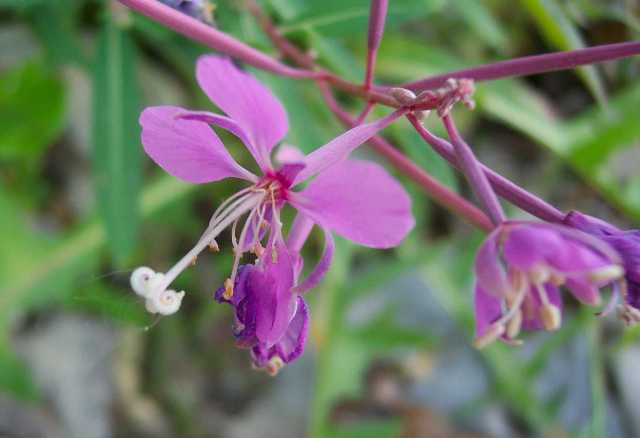Fireweed, Willowherb
 |
DescriptionFireweed (Epilobium angustifolium L., Onagraceae) is an erect perennial that grows up to 1.5 m tall, from a thick rootstock and has alternate lance-shaped leaves. Flowers are 4-petalled, purple or pink, in a long, loose inflorescence at the ends of stalks. The seeds have a tuft of silky hairs and are contained in capsules that split lengthwise. |
History And Use
The North American First Nations people used fireweed as a fresh or cooked vegetable, as a tobacco substitute, and as a poultice to draw out infections. Stem fibres were used for thread. Today fireweed has been shown to have potent anti-inflammatory activity, and is being developed into products to treat skin problems such as diaper rash, and as a mouthwash for the treatment of sore gums. The nectar is also important in the honey business.
Area Of Adaptation
Fireweed is most commonly found in dry, open disturbed areas, especially after fires, across Canada as far north as the Arctic Ocean and Baffin Island, most of the USA except the south, Greenland, Iceland and northern Eurasia.
Cultivation And Processing
Until recently most of the supply has been obtained by harvest of wild fireweed. There is now a very limited amount of cultivation, but details are not available. Processing involves extraction of the whole plant or above-ground portions.
Marketing
Fireweed shows anti-inflammatory activity to reduce the redness associated with skin irritation. After-sun, after-shave, baby (e.g. diaper rash), and cosmetic products containing an extract of the whole herb rich in particular flavonoids, manufactured by Fytokem, Inc. in Saskatoon, SK, are now in commercial distribution in Canada, the US, and Japan. There is also a mouthwash product. The closely related marsh willowherb (Epilobium palustre L.) is used to make homeopathic drops and granules registered with Health Canada. The young leaves and shoots of fireweed can be used in gourmet salad mixtures. Fireweed honey has been commercially available for many years.
